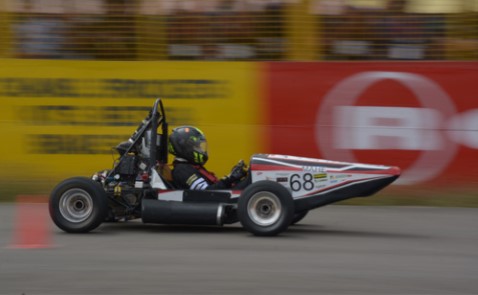Be it Satya Nadella, Rajeev Suri or many such global CEOs, Manipal Institute of Technology (MIT) has been nurturing global leaders for more than 62 years. Today, the institute receives about 52,000 applications for a total intake of 2220, which means there are 24 applicants waiting for a single seat. Getting into MIT is literally a race! Why not to race, if the destination is worth reaching for?
Manipal Institute of Technology (MIT) is undoubtedly a place to experience the education. In fact, the vision of MIT “Excellence in Technical Education through Innovation and Teamwork” clearly articulates its way forward. “We at MIT believe that a creative mind is the net outcome of conducive environment, which facilitates experiential learning. We have some of the best technical and cultural clubs run by students. This gives them an additional technical, cultural and managerial experience beyond the curriculum,” says Dr. D Srikanth Rao, Director, Manipal Institute of Technology.
At MIT, there are technical clubs for the academically inclined; there are cultural clubs that give a student the opportunity to dabble in the fine arts, music, dance, theatre – everything that feeds the mind and spirit. In a nutshell, every student has more than one thing to do at MIT. “The student bodies work like a corporate company here. They generate and manage funds, design, and test the product and participate in the competitions at international level. In many cases, they won laurels as well,” shares Dr. Rao.
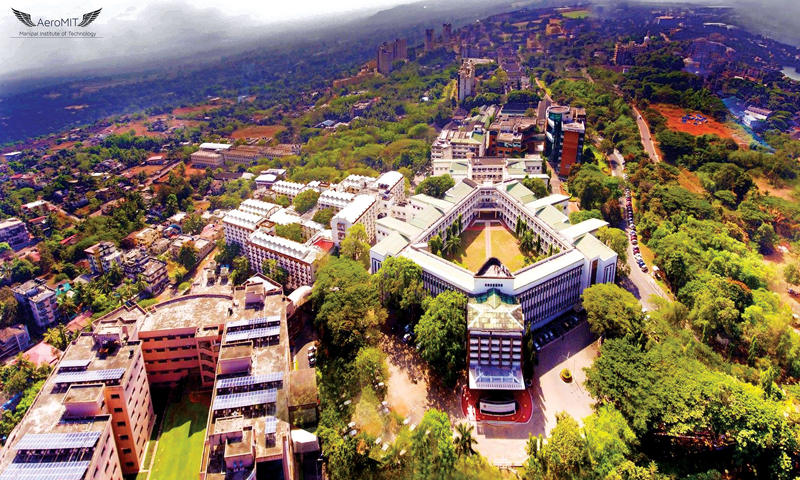
The technical clubs of MIT work in design and development of futuristic products. Mostly they are topics of the open challenge posed by the various organizations at the international level. Formula cars, solar cars, all-terrain vehicles and mini-satellites are some of the examples. “Manipal has something for everyone. Now, we are working on a driverless car, which will be ready by next year,” says Rithwik Srinivas, a fourth-year Mechanical student of MIT, who is also the Team Manager of MIT’s one of the most successful students’ club, Formula Manipal.
Inside the MIT’s Student Clubs
“In India, entry into engineering Institutions is highly competitive, due to which at the entry level all the students have a built-in competitive spirit. Keeping this in mind, as an experiment, in 2007, we came up with an idea of Major Student Projects, wherein, we will provide infrastructure to build a technical project to compete at an international competition,” says Dr. Rao. MIT’s one such initiative in 2007 was ‘Formula Manipal’, a student engineering project comprising of a group of undergraduate students aiming to design, conceptualize, fabricate, test and race a single seater, open-wheel Formula Style race car. Since its first competition in 2008, the team has participated in competitions in Italy, UK, Austria, Germany and Czech Republic.
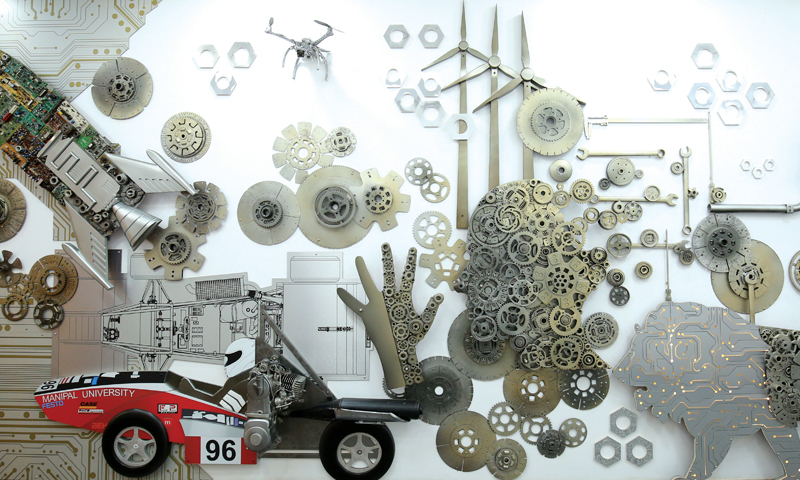
“Recently, we did very well in the Formula Bharat, an Engineering Design Competition held at Kari Motor Speedway in Coimbatore. We participated with two cars – Combustion Car FMX8 and Electric Vehicle FMX8e. The Combustion Car finished first in the dynamic event ‘Acceleration’ with an acceleration of 4.288 second and first in the static event ‘Business Plan Presentation’. At the end, we finished third in the overall competition,” shares Rithwik. Till now, the team Formula Manipal has produced eight cars. FMX8e, the electric car that made its debut in the Formula Bharat also did well, securing the second position in the Design Event and came third in the overall competition.
The success of Formula Manipal was the beginning of many more student teams. 2008 saw the start of ‘Team Manipal Racing’, off-road racing club to design and fabricate All-Terrain Vehicles according to the rules laid by SAE BAJA. Year 2009, AeroMIT was initiated to design, manufacture, and fly a complex, stable, and portable model aircraft with minimal empty weight, maximum payload carrying capacity; RoboManipal was started with an aim of taking part in robotics competitions like Robocon. Parikshit Student Satellite Team started in 2010 aims to build nanosatellites. The year 2011 was the beginning of ‘Solar Mobil’ with an aim of research & development of the solar powered electric vehicle. Project Manas, aiming to develop an ‘autonomous drive system for vehicles’ optimized for Indian road and traffic conditions; Mars Rover Manipal, with a primary objective of building a Rover for University Rover Challenge was established in the year 2014. Altogether, at present, the institute houses about 17 major project teams run by students.
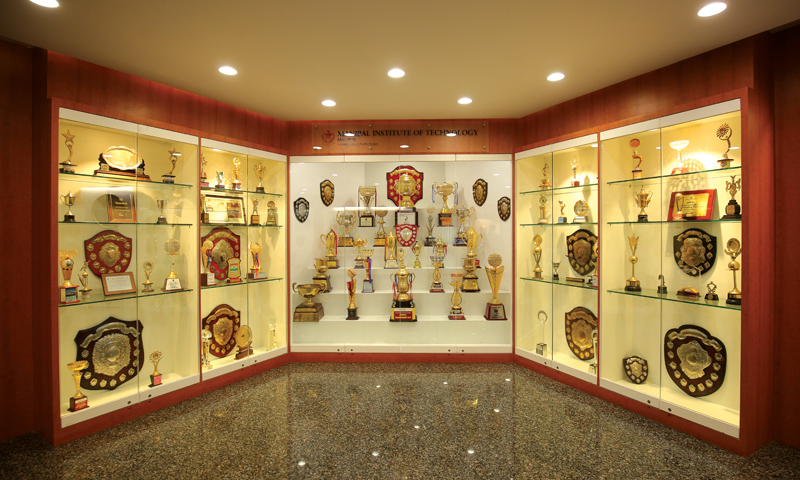
Dr. Rao says, “All these teams are interdisciplinary in nature, having student representation from first to final year. In the process of getting into the team, and selecting the members to the team, students learn to face and conduct interviews.” With the team size ranging from 25 to 50, students learn to work in groups. By working under tight deadlines, they learn to meet deadlines. By submitting weekly progress report, by presenting a weekly progress and scheduling the task, they hone their documentation, presentation, and planning skills. To generate the financial support, they need to sell their idea to possible sponsors. In the process, they learn the marketing, budgeting, and accounting skills. “It feels proud when you win major competitions after putting all the hard-work. In fact, working in these clubs will help you to find your true potential,” says Rithwik, who is planning to become an entrepreneur after completing his graduation.
Be it a driverless car or mini satellite, every student project of MIT is innovative in nature. As a result, MIT has seen many publications and start-ups coming out of these projects. “We also see more scope for publication and IPs. With these in mind, we have come up with a ‘Student Project Scrutiny Board (SPSB)’. Students need to present their project and the progress to the committee for the potential funding support, possible publications, and IPs,” shares Dr. Rao.
Creating Leaders and Innovators
MIT has an excellent track record of nurturing global leaders. This may be mainly attributed to multidisciplinary, multinational, pan India, multicultural environment in the MIT campus enabling all-round development of the student. In addition, the institute gives ample freedom to the students to have self-discipline, openness to come up with new ideas, to take ownership of their decisions and actions. “Being innovative and creative, every student has some innovative ideas to solve some stressing issues of the society. Also, most of the students have the potential to be an entrepreneur,” pinpoints Dr. Rao.
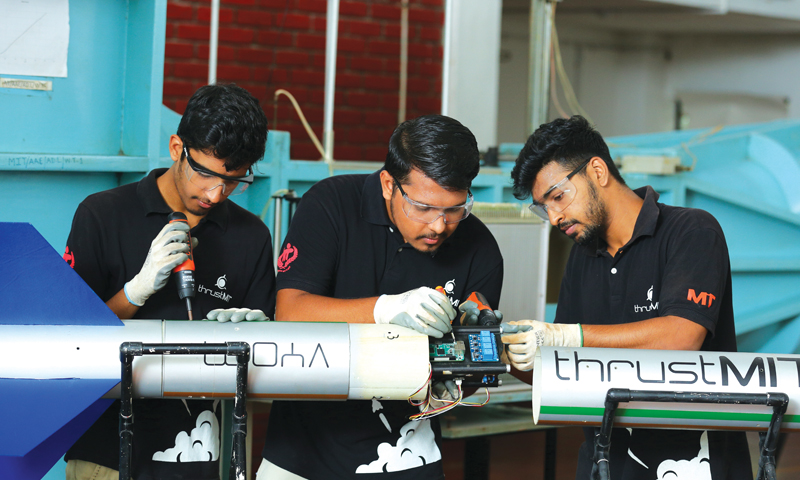
Always a forward-looking Institution, MIT felt the need to nurture creative and entrepreneurial qualities of the students and started the Innovation Center in 2007. Further, to take innovative projects to society, Manipal University Technology Business Incubator (MUTBI) came into existence in 2009. Till now, more than 19 companies have been graduated with more than 50 percent of survival success from MUTBI. Fracktal Works Pvt. Ltd., Manipal Printronics Pvt. Ltd., Isa Technologies Pvt. Ltd., are the few successful companies to name among them. “The very nature of atmosphere at MIT encourages students to become entrepreneurs. By encouraging various club activities, major student projects, participation in institute/university/corporate/national level business plan competition/hackathons, MIT has always encouraged entrepreneurs,” pinpoints Dr. Rao.
As an annual event, Innovation Center conducts an Innovation Day where faculty and students exhibit their prototype solutions. Selected solutions are awarded with the prize money and are also introduced to selected industries for probable partnership or to acquire the idea. These teams are also encouraged to come up with business plans and participate in ‘Provenance’ – a business plan competition, organized by MUTBI. Winners in this competition are awarded with office space and a sum of Rs. 3 Lakh to start and Incubate their start-up. These start-ups are also introduced to the alumni and angel investors for further support.
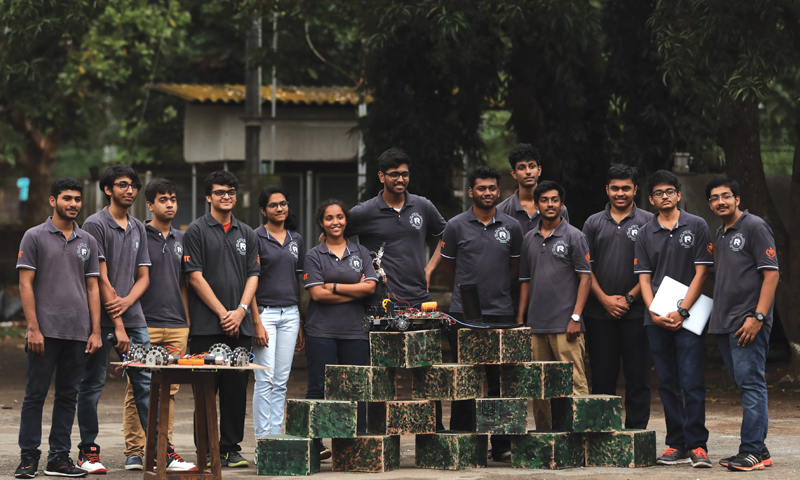
Industry’s Favorite
“Top ranking universities and institutes have some tie-ups and collaborations with the industry, and hence their position is much better compared to the other institutes. The industry is even willing to collaborate with such institutions as the venture is a win-win situation for both,” opines Dr. Rao. At MIT, industry plays a crucial role in fine-tuning the students as well as faculty members. The institute has initiated faculty sabbatical for a short period in industries, so that they can transfer the knowledge back to the institute. Elective courses are also offered by industries or jointly by industry experts and faculty at the institute. Infosys, CISCO, EMC2, TCS, Bosch and Schneider are some examples of such initiatives at MIT.
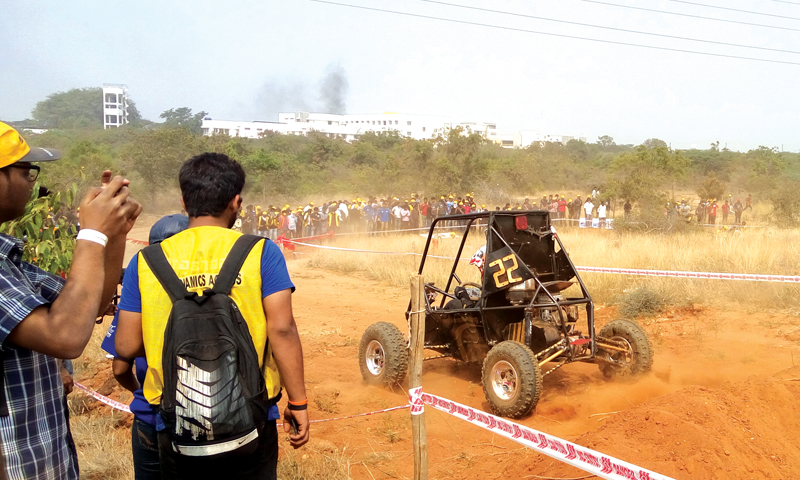
“We are also offering PG courses for the industry employees based on MoUs. Because of this assured quality and quantity, our internships and placements are quite good,” claims Dr. Rao. Every student pursuing graduation in engineering at MIT, should undergo a minimum of four-week internship in a related industry and present his/her learning by way of a report and oral presentation. Dr. Rao adds, “At MIT, we allow them to undertake an internship during the vacation starting from the fifth semester. This gives them multiple chances, and moreover, the crowd gets distributed over a longer period.”
Generating Knowledge
“In the past, the research culture in Indian Institutions was behind reputed international institutes. However, in the recent years, the trend has shifted with enhanced emphasis on research. At MIT, we have seen tremendous growth in the numbers of publications and grants in the last three years,” states Dr. Rao. MIT regularly conducts research orientation seminar/workshop highlighting the research facilities and incentives available to all students and faculties. Besides, the institute has world-class research facilities and labs supported by various government agencies and corporate companies.
“The number of PhD research scholar’s intake is increasing year on year. To motivate faculty and students, the university provides administrative, HR and financial support for research projects,” says Dr. Rao. To foster research culture among early career researchers, Manipal Academy of Higher Education has signed an agreement with Wiley Research Academy, in addition to the working relationship the university has with several foreign universities in research collaborations.
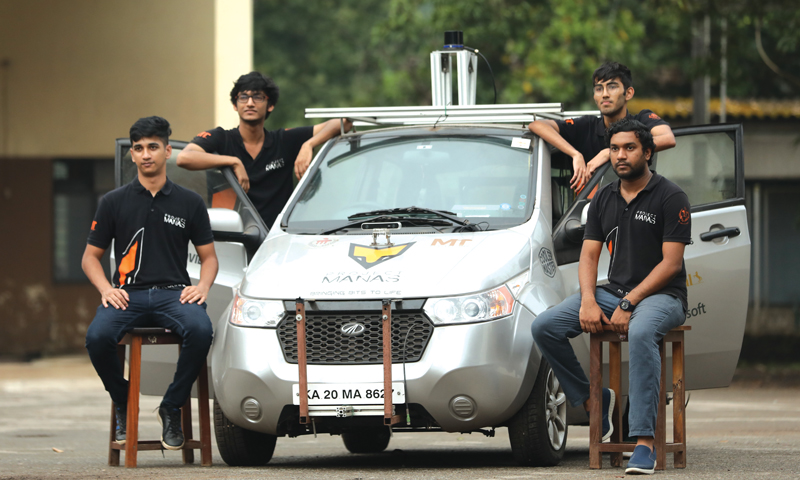
MIT gives the students a unique opportunity to join the research scholars in the faculty research through a program called Hobby Research Project. The students will get to learn research methods and can carry out experiments under the guidance of the faculty mentor. Consequently, students can successfully publish their findings in the Scopus indexed journals and present their work in reputed conferences. The institute also provides students IPR related guidance for patenting their works. In 2018, MIT students actively participated in research activities, publishing around 200 papers.
On the other side, MIT encourages international collaboration and consultancy with reputed institutes/organizations. The institute has active research collaborations with international universities such as University of Milwaukee, University of Strathclyde, Wright State University and University of Dayton in USA; Deakin University, University of New Castle & UNSW in Australia, Cranfield University & City University in United Kingdom; University of New Brunswick, Canada, University of Groningen, Netherland and University of Antwerp, Belgium; Tel Aviv University, Israel to name a few. In addition to that, MIT has MoU’s for faculty/student exchange with about 90 prominent universities worldwide.
“Our students can opt for semester abroad program in any international University and get their credits transferred. This provides a new learning opportunity with best of facilities available at these institutes,” shares Dr. Rao. Besides, students from these international universities also visit MIT and the shared learning provides them exposure to technical and cultural learning. Some Universities also provide short internship, which is also a great opportunity for technical education.
“From research point of view, students will be actively involved in various interdisciplinary/ research projects. Gaining managerial and research skills. The overall development will make them good employee, researcher or entrepreneur in the future,” pinpoints Dr. Rao. Going ahead, MIT has bigger and better things to do. Paperless examination through E-pads, Techshop to host major student projects, a futuristic library and classrooms with lecture capture facility with the aim of producing online learning materials are the few immediate ones.
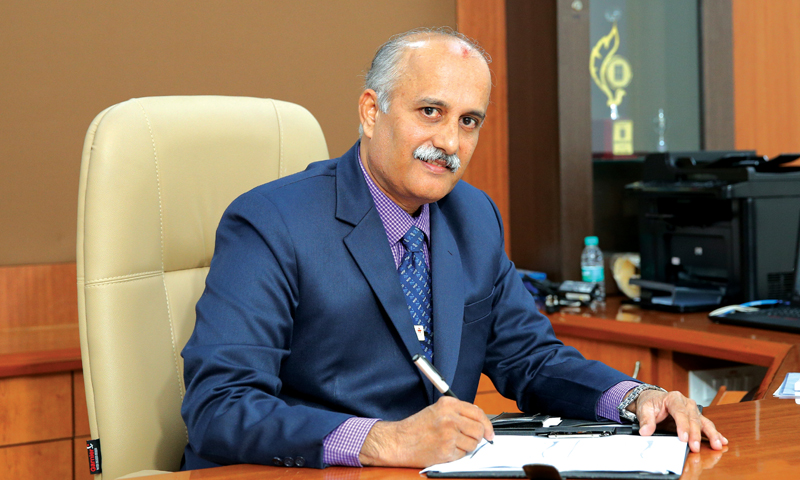
Dr. D Srikanth Rao, Director
Dr. Rao, a Professor, Department of Mechanical & Manufacturing Engineering, is an Alumnus of Manipal Institute of Technology, obtained his B.E. degree in Mechanical Engineering from University of Mysore, in 1984; M.Tech. and PhD degrees from Manipal University in 1991 and 2009 respectively. After graduating from MIT, Manipal, worked with M/s Hindustan Dorr-Oliver Ltd, a Stanford Oil Subsidiary then, for 5 years of useful industrial exposure, in the area of Operations, Installation and Trouble-shooting of Filtration, sedimentation and other pollution control equipment’s for major mining industries, sugar and other refining industries.
Before taking charge as the Director of MIT-Manipal, he was assigned the challenging responsibility of looking after the Admissions at Manipal University, Manipal, as its Director (Admissions). Before this, he had also served as the Joint Director of MIT, Manipal. He is also a sports enthusiast with keen interest playing Shuttle Badminton & Cricket.




